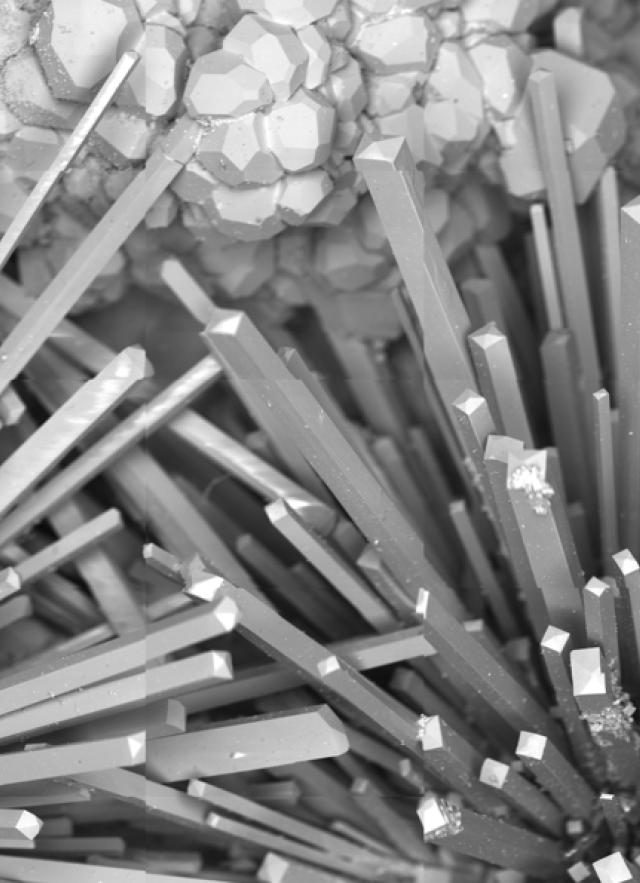
Lesson Plan | All Grades
Zoom in on tiny specimens with the Scanning Electron Microscope.

Lesson Plan by DeAnna Lee-Rivers, MA Ed.
Museum researchers use the Scanning Electron Microscope (SEM) to zoom in on tiny specimens and learn about worlds they otherwise wouldn’t be able to see. Now you too can view these worlds in the SEM Lab! Follow along with the provided worksheet to discover how the technology works, learn how a specimen is prepared for viewing, and meet some of the scientists using the SEM to advance their fields of research.
Pre-Visit: 30-50 minutes
Visit: 20 minutes
Post-Visit: optional
Scanning Electron Microscope (SEM) Lab in the Gem & Mineral Hall
During a trip to the Museum, explore the SEM lab and complete the worksheets.
You may expand your learning with activities and conversation starters from the Post-Visit Slides and Post-Visit content at the end of this lesson plan.
A Scanning Electron Microscope (SEM) is a powerful instrument that uses electrons to create a detailed image of incredibly small specimens. Present the Pre-Visit Slides to your class to provide students with a foundation for their trip to NHM and exploration of the SEM Lab.
During a field trip to NHM, take some time to investigate the SEM Lab. You may split your class into small groups or have students work individually to complete the Get the Scoop on the Scope Worksheets. Note that there are two versions–A and B–which will allow your class to occupy the space efficiently.
SEM technology has changed the way we look at the world and helped solved problems that we weren’t able to before. The best part is that we are able to imagine new possibilities for the future! Go through the Post-Visit Slides and consider the ideas below in your discussion on this question: How could SEM technology be useful for your community?
Here are some ideas:
Variation & Extension Ideas
In order to continue engaging with the exhibit and exchanging ideas, you will find additional resources below. Feel free to pick and choose which of these resources you would like to use.
Draw a picture of an organism or item that you would like to see under an SEM. Perhaps consider organisms living in or on our own bodies such as gut bacteria and face mites on skin.
Create-A-Creature: Choose an SEM image of an organism that looks especially interesting to you. Create a life story for that organism. Get as creative as you possibly can and use these questions to get started:
Opportunities for Research: Further investigate a topic related to SEM that you find interesting. Prepare your findings in an essay or report. Here are some example topics:
Diversity in the field of SEM research: There are scientists from many different backgrounds who have contributed to SEM advancements and who use the technology currently. You can read about two of them below.
Research another scientist using microscopes in their field of study and present their biography to the class in the form of a poster.
Community Connections: How can YOUR community benefit from this technology?
Will my students be able to use the Scanning Electron Microscope during their visit?
Will a scientist be demonstrating how the Scanning Electron Microscope works during our visit?
NGSS
HS-PS4-5
S+E Practices
1, 5, 6, 8
Crosscutting Concepts
Influence of Science, Engineering, and Technology on Society and the Natural World (MS-ETS1-1, HS-ESS3-3)
CCSS ELA
WHST.9-12.2